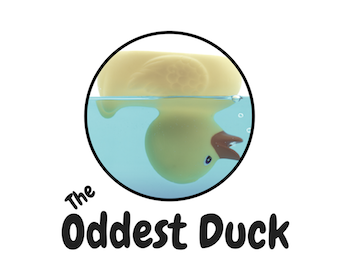In maybe the least surprising study ever, it was found that even scientists exhibit bias towards research of cute animals. It’s easy to understand — cute animals are easier to care about, and thus, research easier to fund. Who’s easier to love? Baby seals, or the frightening aye-aye?

First impressions are often wrong. Hyenas are stereotyped as cowardly scavengers, slobbery and stupid; yet they’re the most efficient hunters on the savannah, and surprisingly clever. Bats are mostly harmless to humans. And the friendly, beloved dolphin has a horrifying dark side. Point is, you don’t really know something until you get to know it.
People with ASD aren’t any less good-looking, on average than the general population. Some are quite attractive. But still, there are parallels between us and the creatures that are so often misunderstood — not in our appearance, which is for the most part normal, but how we act. Consider some typical behaviors of autistic children and teens:
- Tantrums
- Hitting or lashing out at others
- Anger and aggressiveness
- Obsessions
- Antisocial tendencies
- Lack of eye contact
- Blunt, honest comments, inconsiderate of other’s feelings
There are reasons behind this rooted in their ASD. Anger comes from the frustration of not being understood, or our intentions misunderstood. Tantrums and hitting happen because of not knowing how to communicate our feelings. Social relationships become so hard to navigate that we become isolated. Empathy is built from the ability to understand what other people feel; impossible when you can’t even express your own feelings.
And here’s the problem: what do you call a neurotypical (NT) who exhibits that kind of conduct? Bullying. Spoiled. Disrespectful. Sociopathic.
I’m not suggesting we simply accept that autistics will act badly.
Far from it.
We just need to deal with it differently.
Imagine a left-handed woman reprimanded for not using her right hand. Or a color-blind man disciplined for not recognizing red. Punishment won’t correct a behavior that’s honestly given. To punish an autistic child for her natural behavior only leads to frustration. Teaching them to model proper behavior requires a different approach.
The problem many with ASD have is that they look normal. This is particularly an issue with girls, who tend to mock behavior better than their male peers. So unless the ASD is known by all parties, they’re likely to be treated the same as anybody else.
Being autistic is, too often, being alone. ASD spans race, gender, and all other classifications, but share one common trait: even among those like themselves, they feel isolated. Children with autism need advocates among their families, teachers and peers to protect them, to steer them in the right direction. They must be reached early in life — through love and patience, trained to find their place in the world — or risk being lost forever.
Ugly baby animals can be beautiful, if you look closely to see them for what they truly are.
Next, I wrap up the series by giving some tips about what we can do.


1 Comment
Wrapping Up: Making a Difference – The Oddest Duck
Jun 12, 2017